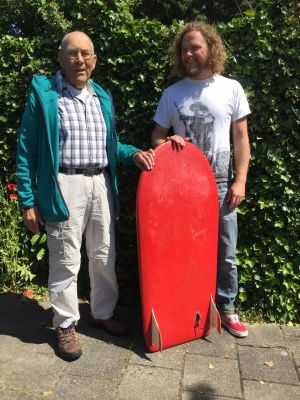
Nico "Niek" Dekkers and Olaf de Vries - June 2016.
Olaf de Vries supplied the following information: "The Netherlands has a cool and unique history when it comes to surfing. It all started in the mid 30's. It was then that one guy was surfing. Coenraad Nederveen. A few decades later our pioneers started surfing in the early 60's. Go Klap went with his catamaran to England to get about 10 plus blanks. He started his surf and skate store. Together with fellow pioneers Arie and Albert they started shaping and surfing Scheveningen beach breaks and travelling the world. They still are surfing.
"Back in the 60's there were literally only a hand full of surfers in Holland. Holland has 353 km of coastline (an another 170 km of islands) and not every surfer knew the other. Eventually they would bump in to each other and share the stoke, as surfers do all over the world. One of those pioneers is Nico "Niek" Dekkers. He died 6 weeks after we visited him and took the shots with him and his/the first paipo (R.I.P. Niek 1938-2016). As a kid his mum and dad took him to Egmond aan Zee. That was in the years during World War II that Holland was occupied by the Germans and Niek found his freedom in the ocean with the waves and the beach.
 Nico "Niek" Dekkers and Olaf de Vries - June 2016. |
In the 60's Niek fled from the rat race of Amsterdam to one of the islands off Holland called "Vlieland". Around 1965 he wanted to experiment with surfboards, but there wasn't a board around. He found a little picture in a magazine. He saw that you had to be able to carry it under your arm and that the length was slightly under 3 meters. A bit longer than a human being. He wanted to start building but his first concern was "How do I get it to the beach". So he started shaping a board out of three major pieces. It weighed 23 kilos. No fins, no wax, but the first step was taken. He took it into the Dutch waves and got hooked. It didn't work as well as he thought but hey. And he said "next time there's gonna be a real surfboard". A few years of searching and then knowing what he wanted and that was to be able to surf. He remembered that his friend from high school had immigrated to America and that he lived in California.
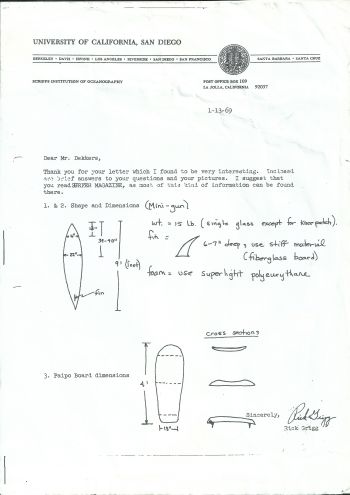 1969 letter signed by Ricky Grigg. |
 Gordon & Smith bellyboard. |
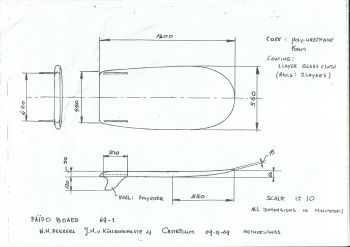 Third design - the template for Niek's board. |
He wrote him a letter, with his wishes for a surfboard and a paipo. There was airmail or maybe too expensive. It took a few weeks for it to get to America and it took a while to get the answer back because his friend also had to search. He got a fax back from the University of California with an explanation of a drawing of Gordon & Smith, go figure. He made the paipo and rode it. His son rode it and his granddaughter rode it till this day.
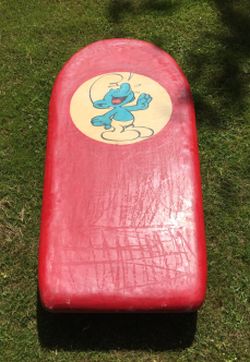 The Smurf is from a poster he got from a magazine called Panorama (still is a fun mag)". |

The board is 1200 x 560 x 50 mm. |
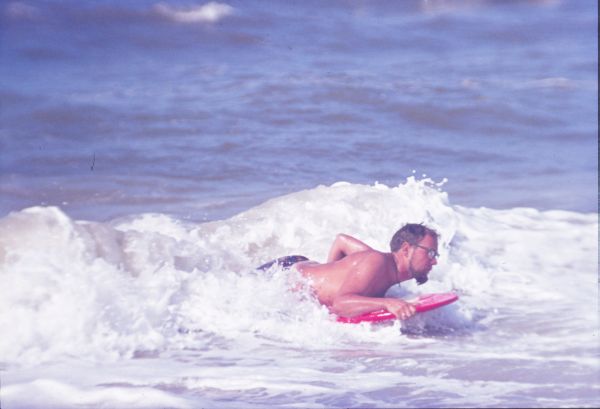 Niek surfing. Photo courtesy Olaf de Vries. |
He also wrote a little piece on surfing in Holland and it got plublished in Surfer mag, volume 9 number1 (March) in a column called "Pipeline", with the slogan "Meer vallen dan opstaan". This is a typical Dutch phrase and translates into "more often falling than standing". He was a legend and also a genius. A beautiful brain and a big warm heart.
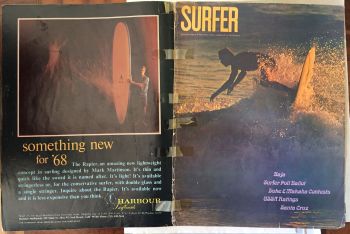 Surfer magazine, 9#1 |
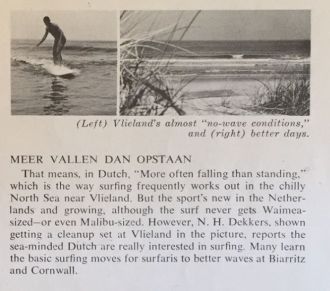 Meer vallen dan opstaan. |
Olaf de Vries has carried on this tradition: "Most Dutch surfers, like most in the world, are sensitive when it comes to surfboard design and wave riding. They follow the trends. But there's always a few that pioneer in some sort of way and Marc is one of them. He's a guy that looks for alternatives and stays stoked. He's a mid 40's grom. Years back he injured his back and couldn't surf anymore. One of Holland's good longboarders he found the surfmat and all kinds of bellyboards. And has been surfing them ever since. We see each other at parties or meet up at the shaping bay. So I try and shape the boards we talk about and put my flavour in it. Together with Marc there are about a dozen guys that got into the body and bellyboards 10 years ago; together with handplanes. They take the plywood, saw and bend it, wax it and ride it. They are similar to the English bellyboards from back in the day (In England there's still contests that they have been running since the 20's).
So the paipo scène is very small but extremely energetic. And we are all in our end 30's mid 40's and even 50's. One just turned 65. Groms for life. Most of surfing the paipo is done around the Scheveningen area. Scheveningen is the epicentre of surfing in Holland. Scheveningen is kinda like a mix between Huntington and Oceanside. It has the harbour wall and a pier. As you know the Dutchies are explorers and travellers. So we always take something home from another country. Now it's finding its way to the south of Holland and there are 3 or 4 guys doing it up north. Around 20 to 30 in Scheveningen. The Netherlands has got 523 km of coastline. On top of that a few islands up north with 175 km of beach. From hollow to slow. From choppy to clean. Mostly knee to head high and occasionally double overhead storm buckets. The diehard paipo guys will surf all kinds of waves. From the ones that break right on shore and get barrelled to the bigger bombs that break further out. These guys, including myself, think that everybody should have one in his/her quiver, but we're not telling hahahaha.
Marc Braat with his paipo board: "Marc's board is made out of balsa with epoxy. I guess it's a mix. A bit of Quam and Simmons with some ollywood gravy. The board flies. Super fast. It has a Royal glide. I think it has to do with a Mother Nature thing. The nature of balsa instead of man-made foam and Mother Natures' water. Combine them and you will have a nice match".
 4'1" Ollywood bellyboard |
 Ollywood bellyboard. |
|
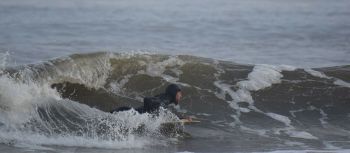 Marc Braat, team rider. |
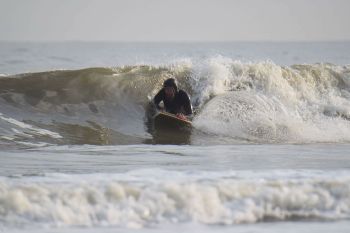 Marc Braat. |
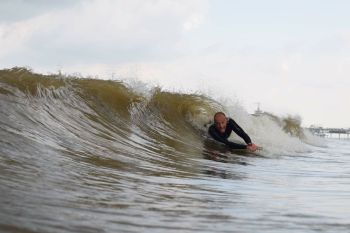 Ruud Zwaan - usually behind the lens for 65things |